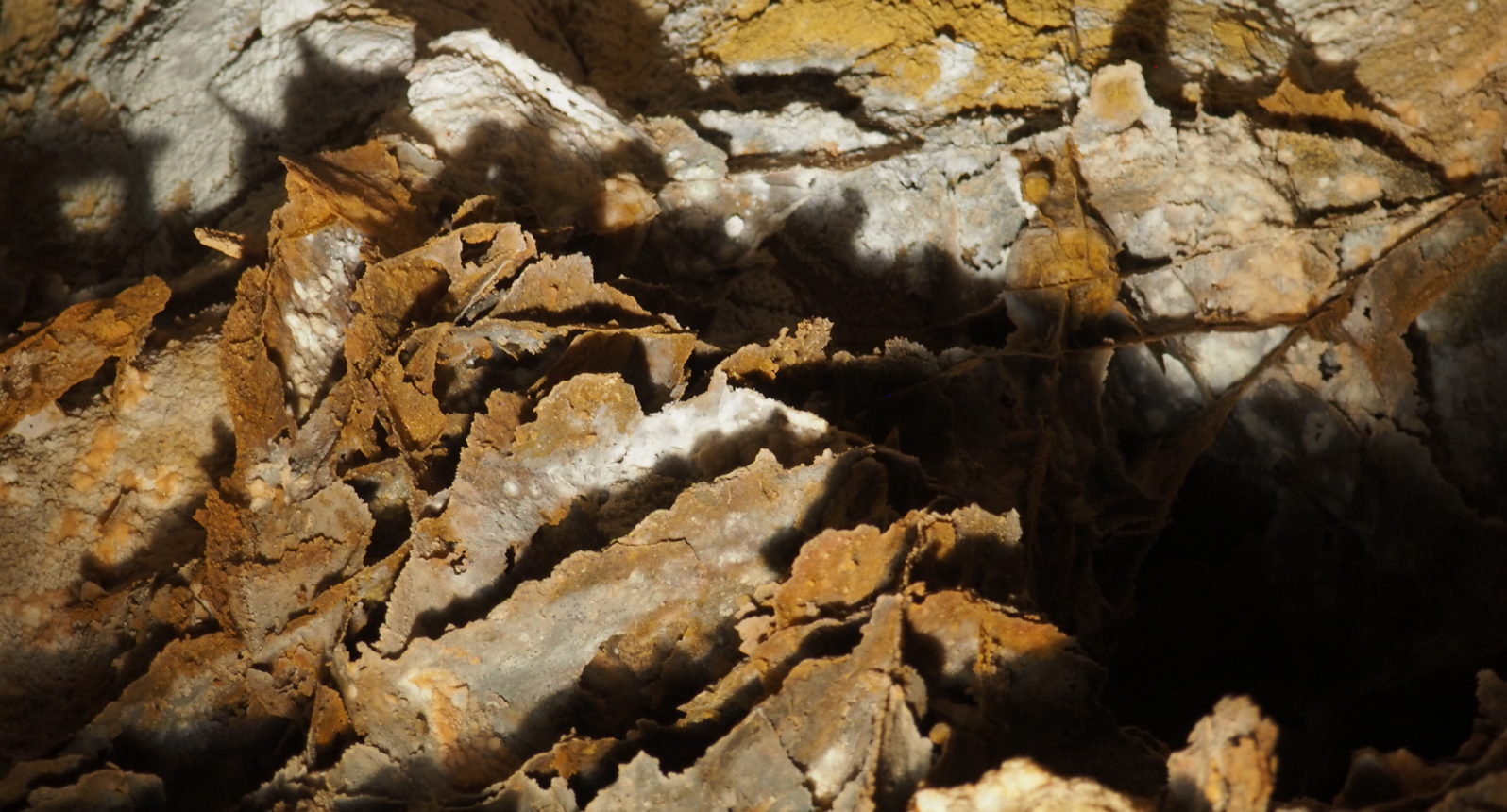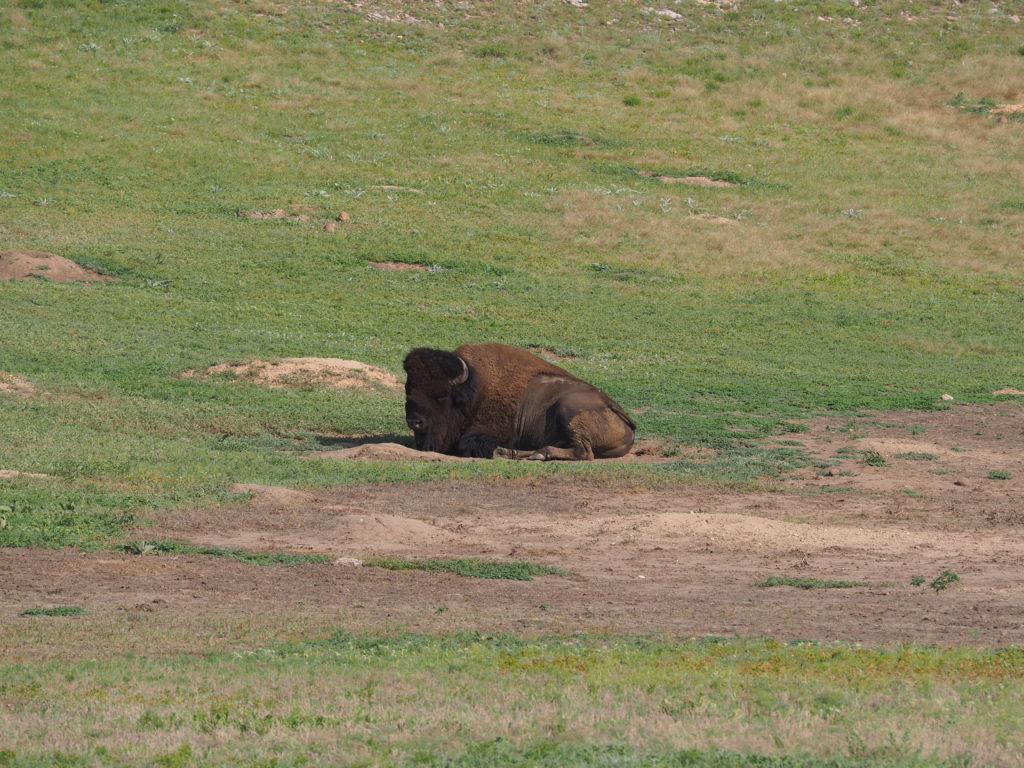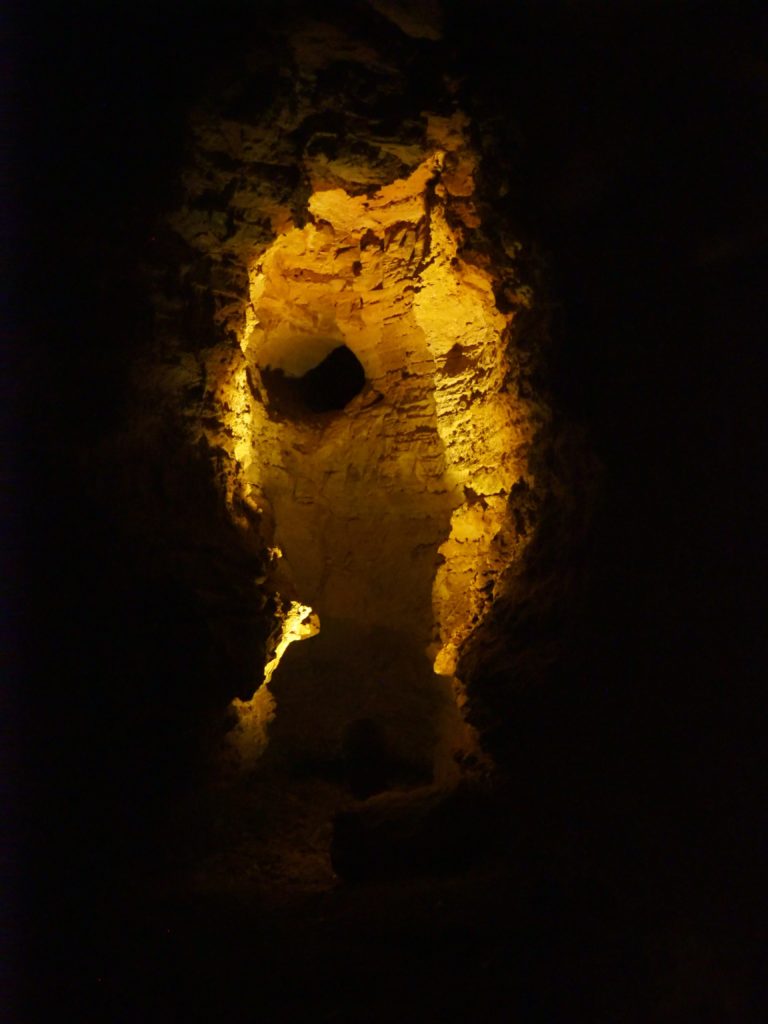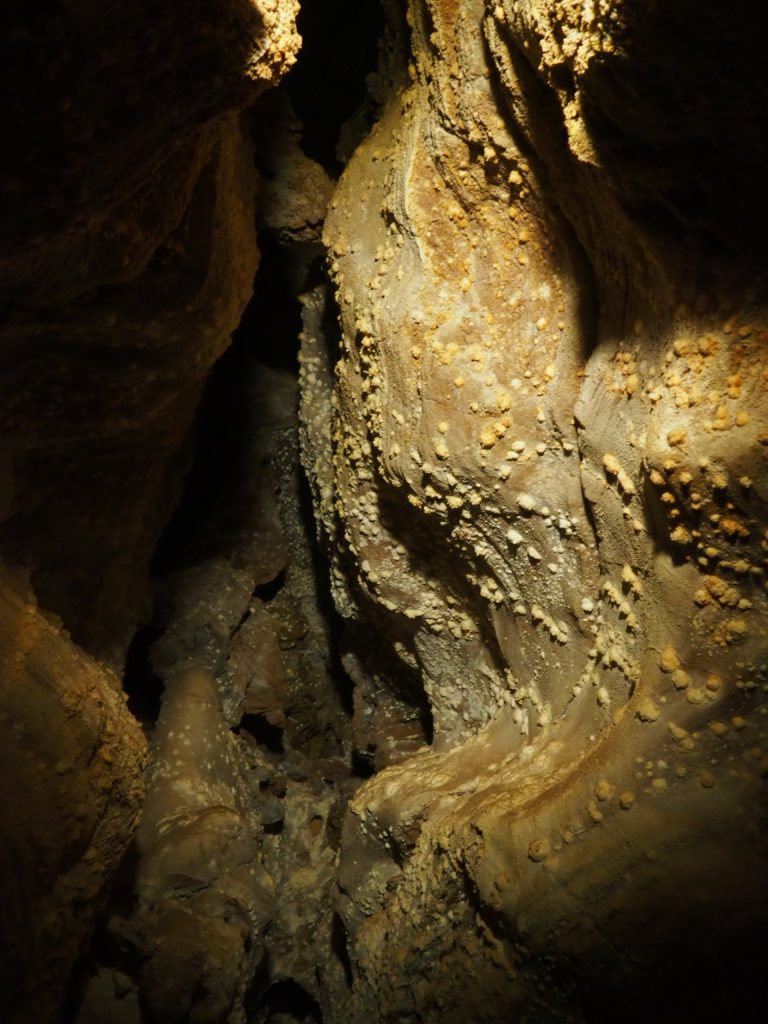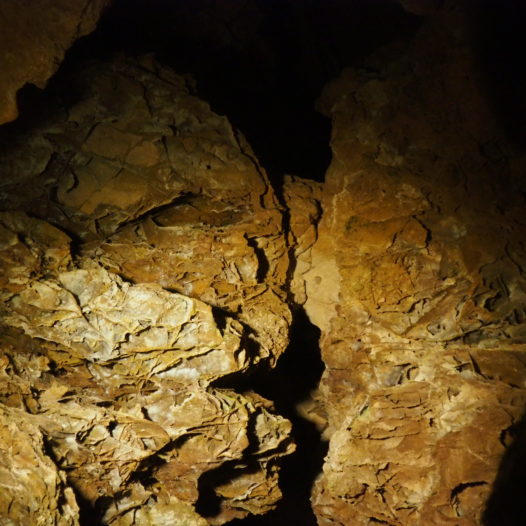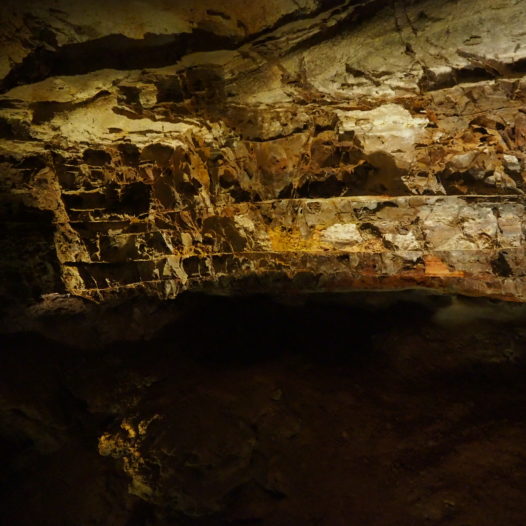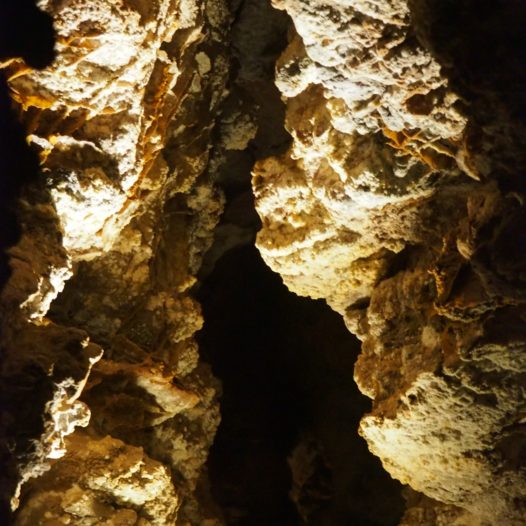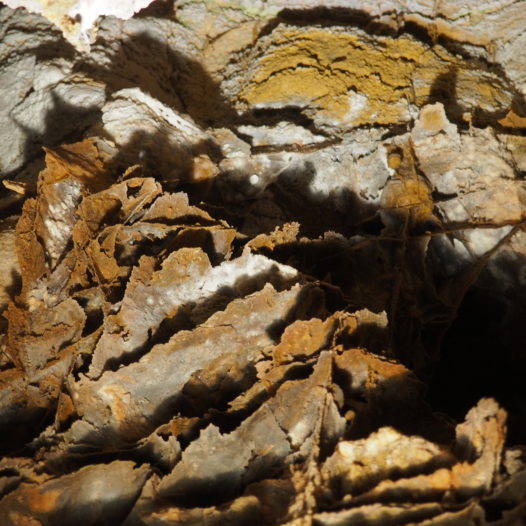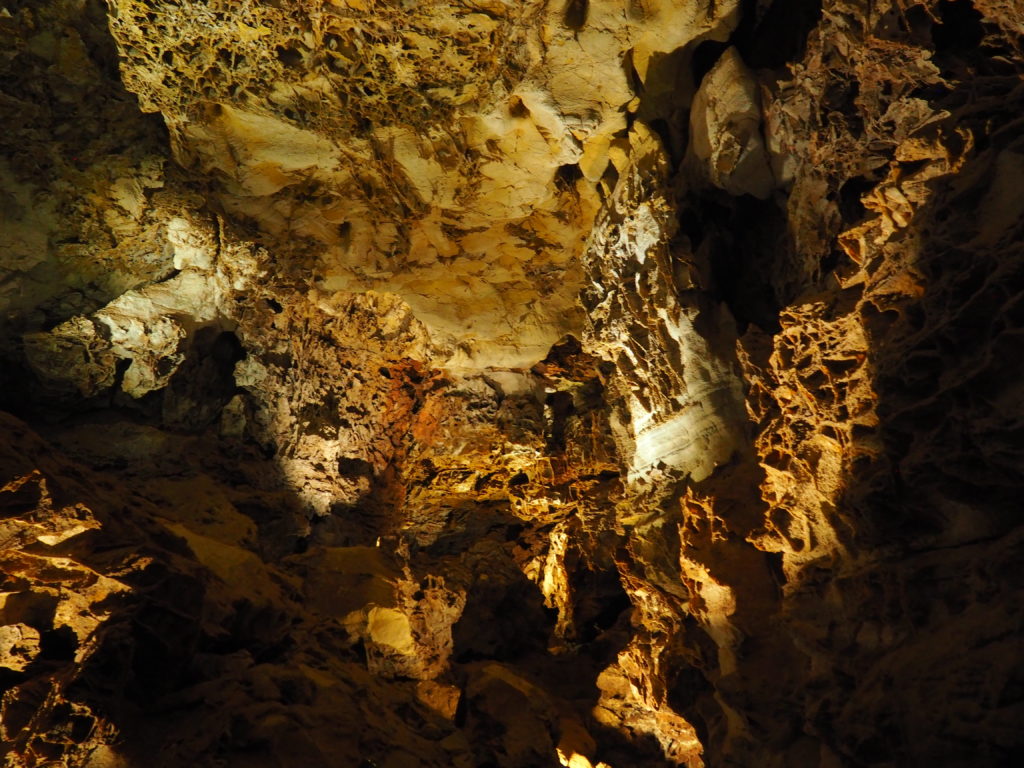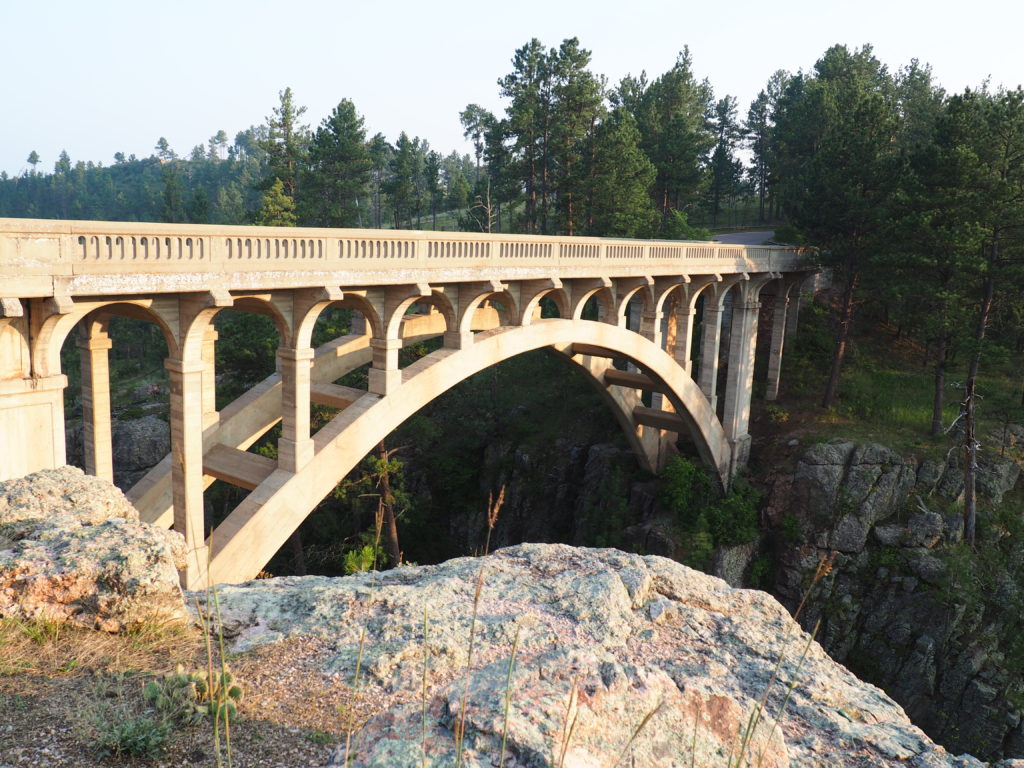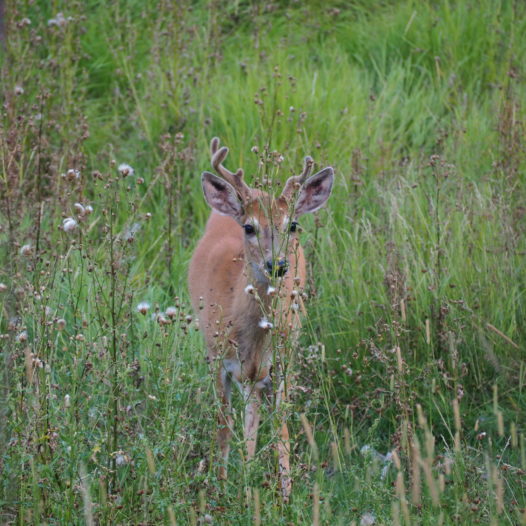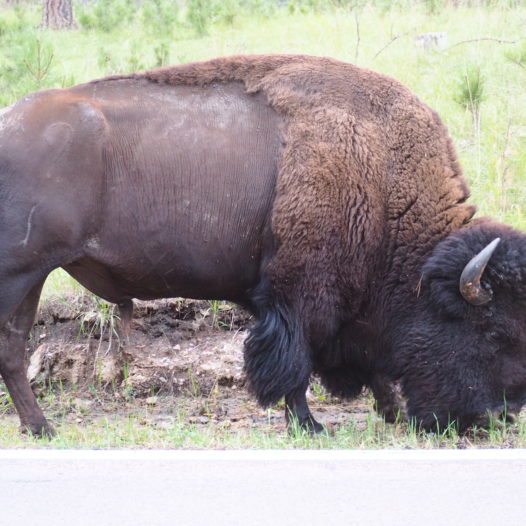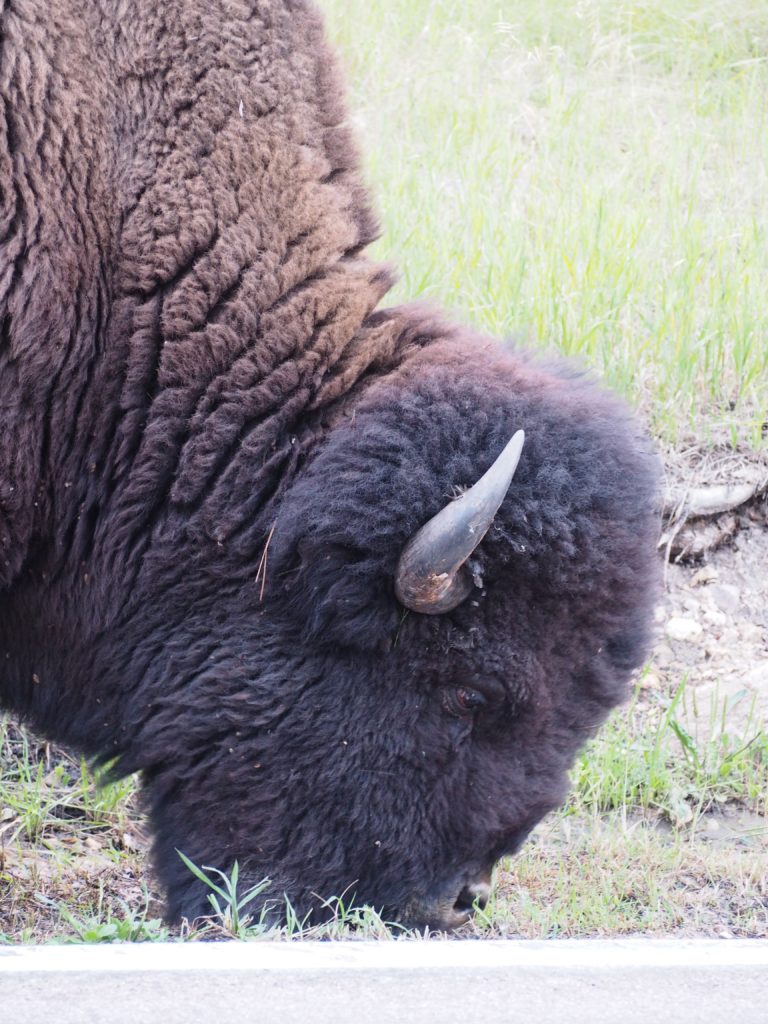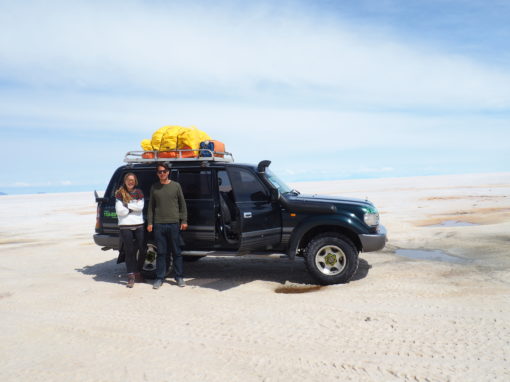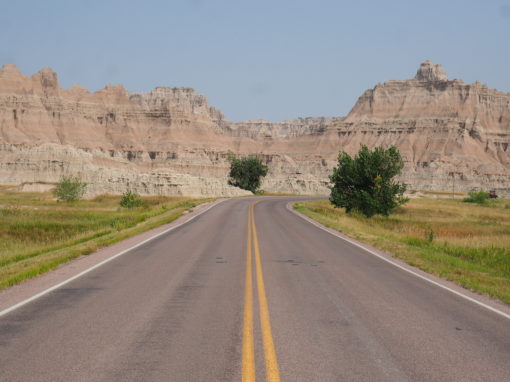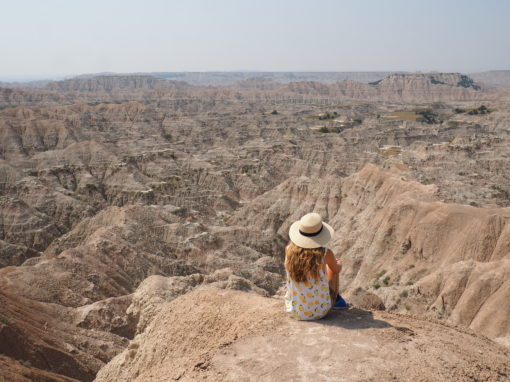As you drive through the large, open grass prairies of South Dakota, you wouldn’t expect to find yourself above one of the most mazed caves in the world. Nevertheless, right beneath your feet, there’s a parallel world out there. Ready to be explored.
Wind Cave National Park is squeezed between the Black Hills National Forest to the west and Custer State Park to the north. Established in 1903 by President Roosevelt, Wind Cave is one of the oldest national parks in the country, with lots of wildlife roaming the grounds above the cave.
I saw my first bison in here!↓
The cave is considered super special for several reasons: because it’s (currently) the 6th longest one in the world with 140 miles / 226 km of explored cave passageways, secondly it has the most “boxwork” formations in the world and thirdly it’s quite something because of all the air flowing through it. Obviously that last feature gave the cave its name.
Many Native American tribes who roamed the lands for thousands of years knew of the existence of the cave, or at least of its windy entry passage. All of them considered it a sacred place and no records have been found of anyone entering the cave.
That was something quite difficult anyway, as there was only one small hole (10-inch /25 cm x 14-inch /36 cm ) that led into the cave. A hole that blew air into the world.
In 1881 two not so native American brothers named Bingham where looking for the hole after they’d heard the stories of the sacred place. Legend has it that when they’d found it their hats were blown off as they looked into the opening.
Shortly after this ‘discovery’ a new entrance had been created with dynamite. Now everyone could go in. Ever since 1881 explorations in the cave have been going ongoing – even nowadays they haven’t finished the examination! And that adds to the mystery of Wind Cave.
The cave opened to the public in 1892 for tours. But nowadays those visits are probably a lot more comfortable than back in the days. Although you sometimes still have to bend and stoop a little through the rocky passages, all of the route is now illuminated and paved. But if you’re charmed by the idea of a candlelight tour like they did a century ago … those are still being offered!
We decided to take a break ourselves from the heat of the day and join one of the other cave tours: the Natural Entrance Tour. This one takes some 90 minutes and is the most popular one of them all. Probably because it’s a great introduction of the cave, but at the same time you don’t have to spend too long in the underground cold.
Fortunately our group was led by a great ranger who had very dry wit. On top of that we only one had fairly annoying 8-year-old hyperactive boy in our group. We could have experience worse.
Slowly but steadily the group hiked along several passageways and some semi-large open spaces. The trail wasn’t strenuous at all and all of the scenery within was varied for sure. At the same time, Wind Cave was quite different from any cave I’d ever visited.
First thing that comes to mind when I think of caves are – besides the unpleasant presence of bats – are stalagmites and stalactites. But as the inner dwellings of Wind Cave were a dry as the sense of humour of our ranger, none of those popular cave ornaments were to be found in here.
In return, we would see a massive amount “boxwork” – a delicate network of thatch-like formations, and calcium deposits named “popcorn”.
All in all it was great to experience the atmosphere of the caves and hear all of the interesting stories of how Wind Cave came to be and how it was explored. But the best thing of all might have been that moment when we got outside and were able to breath in again some fresh air.
That said, make sure to drive the Wildlife Loop Road too afterwards! It’s a gorgeous drive around the area and you may want to keep an eye out for wildlife! You’ll see some white tail deers, prairie dogs and bisons for sure and with a bit of luck perhaps even some pronghorns, fox or coyote.
So many bisons can be seen from the road.
Is it a plane, is it a bird? No it’s a super bison herd!
